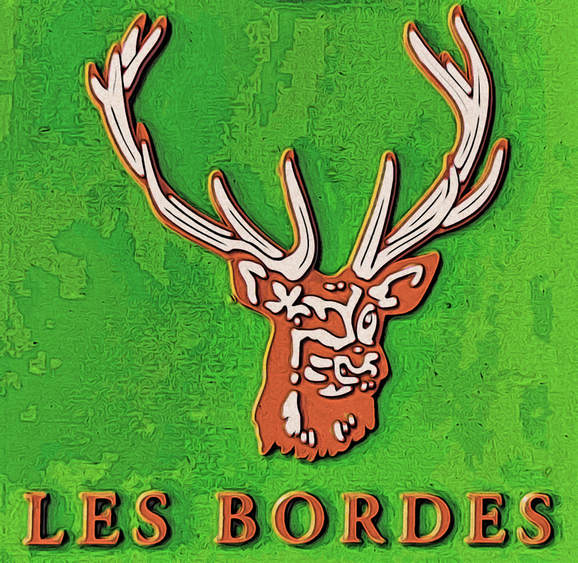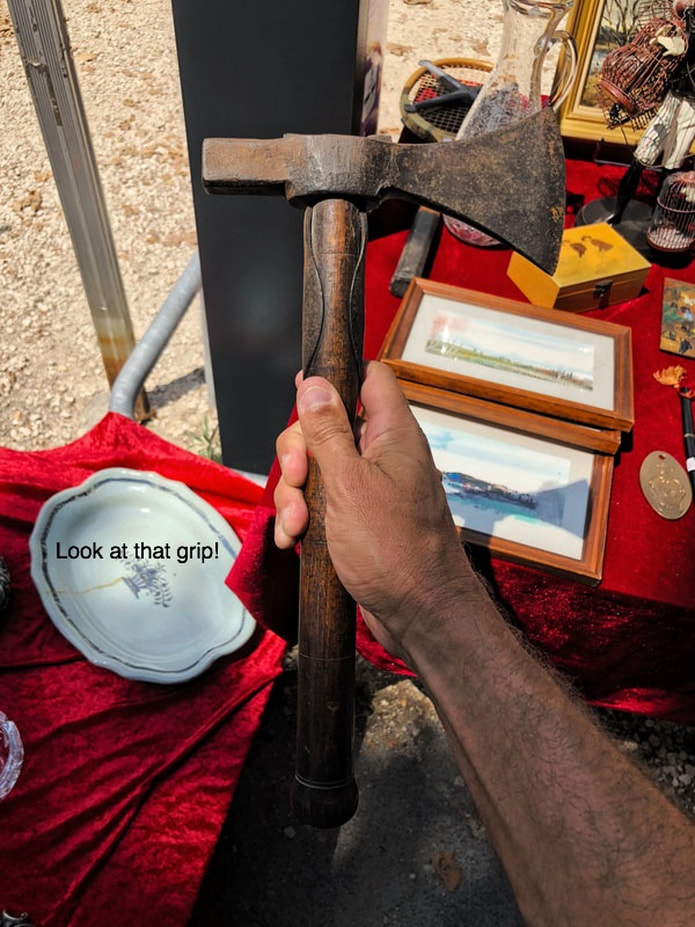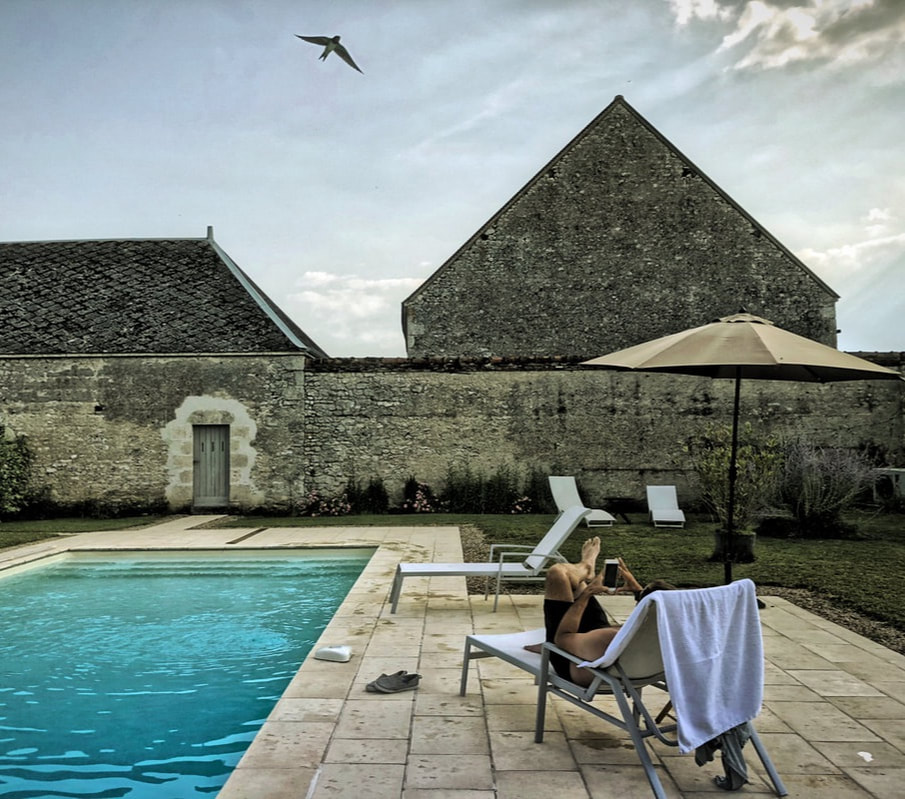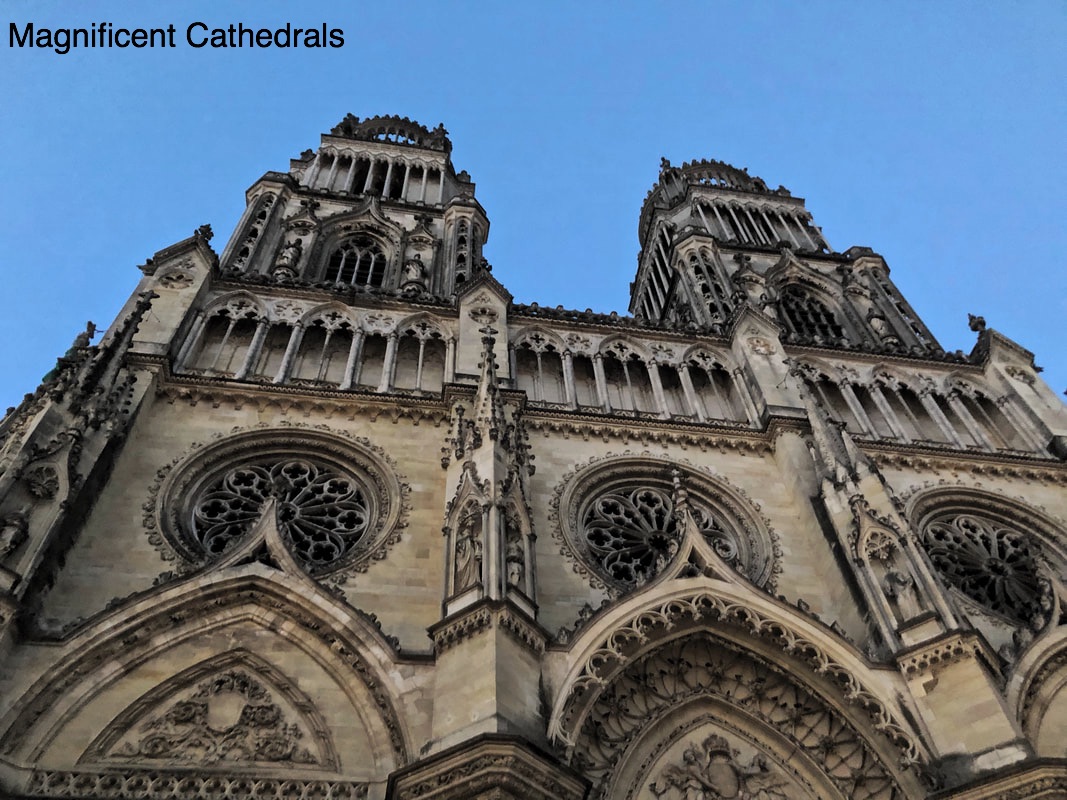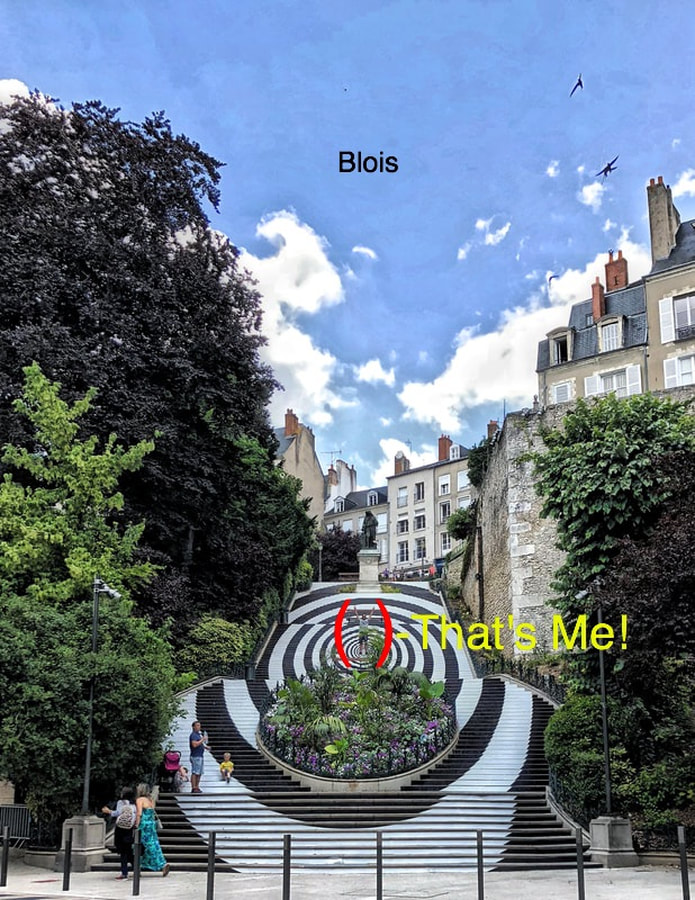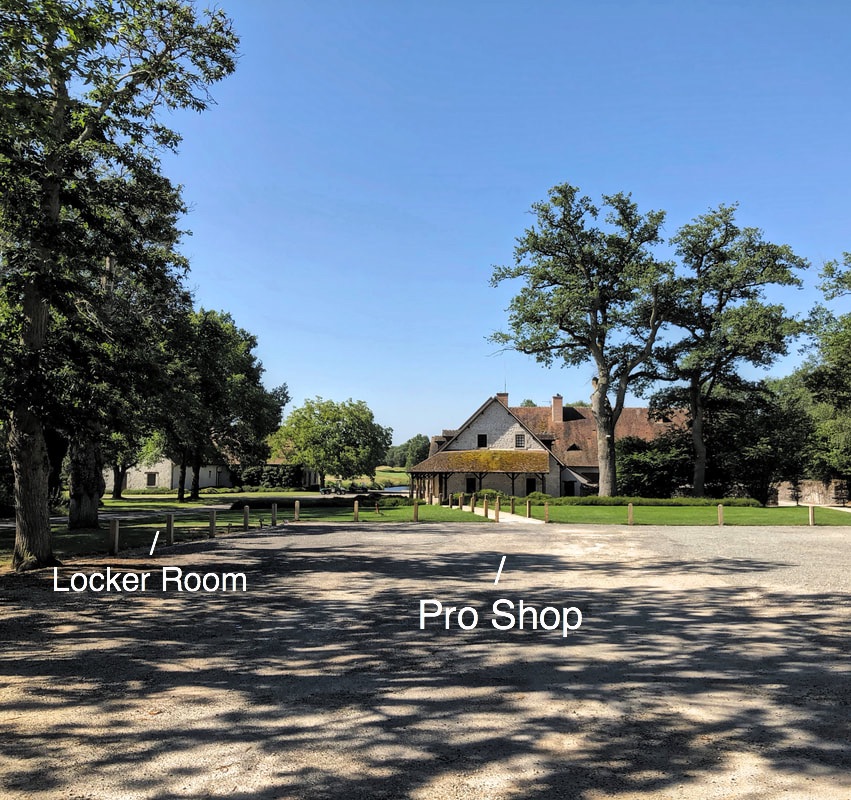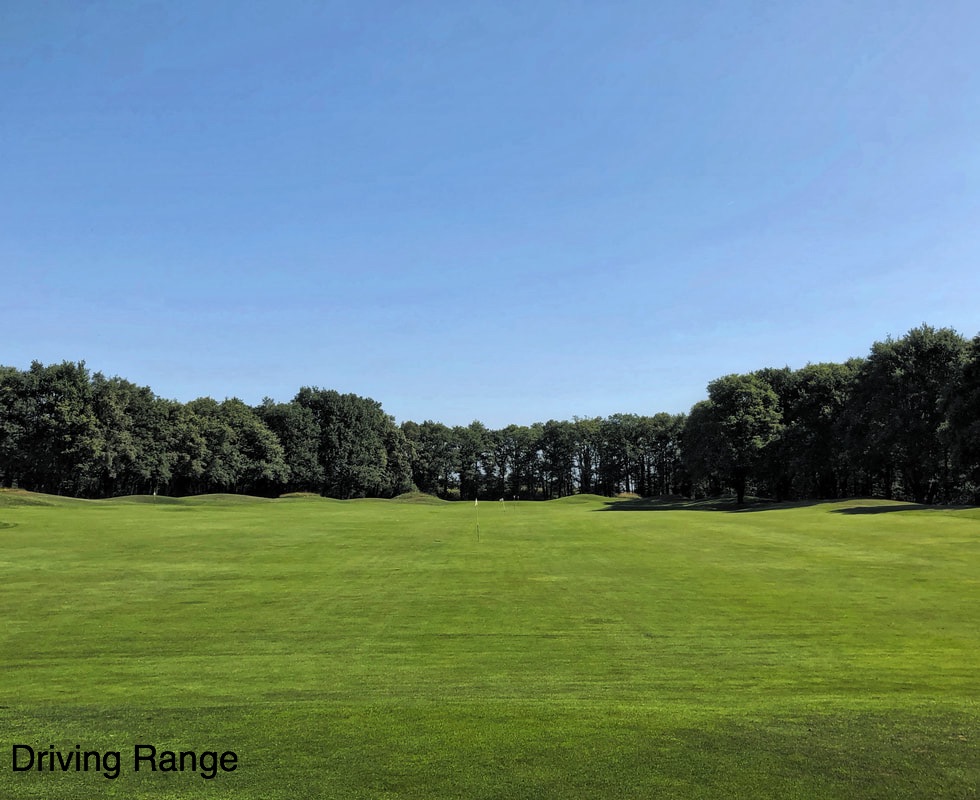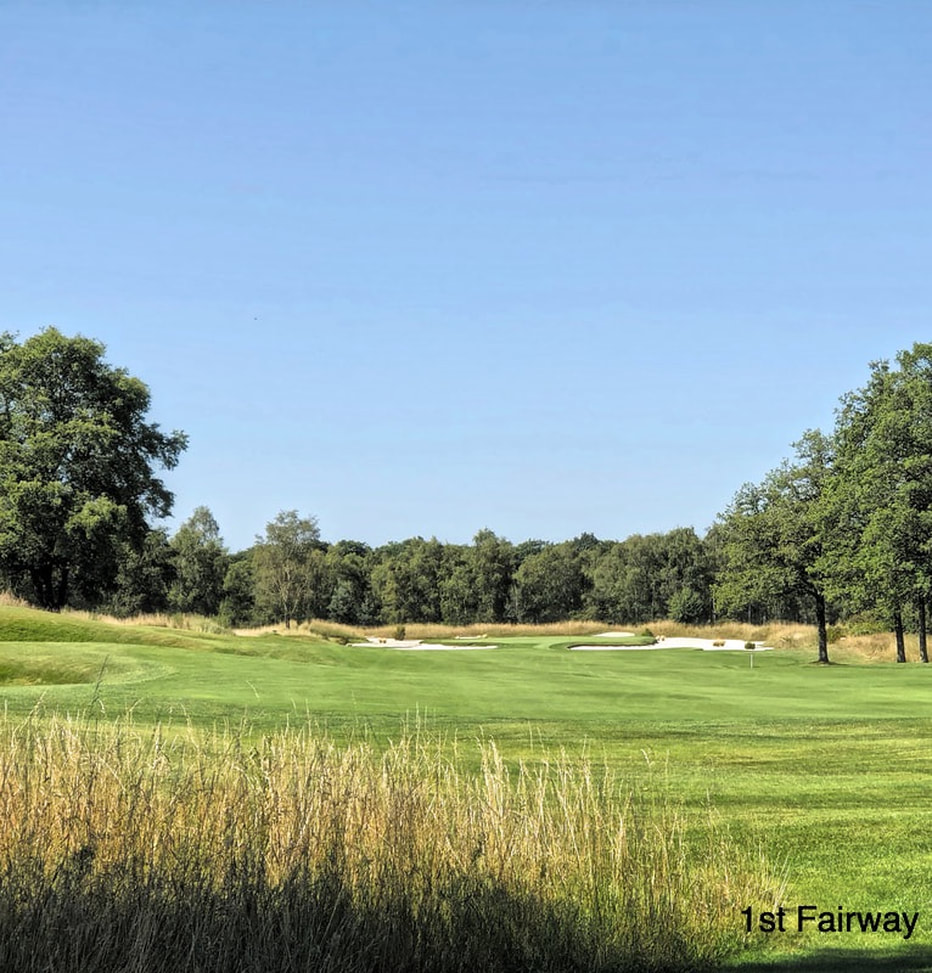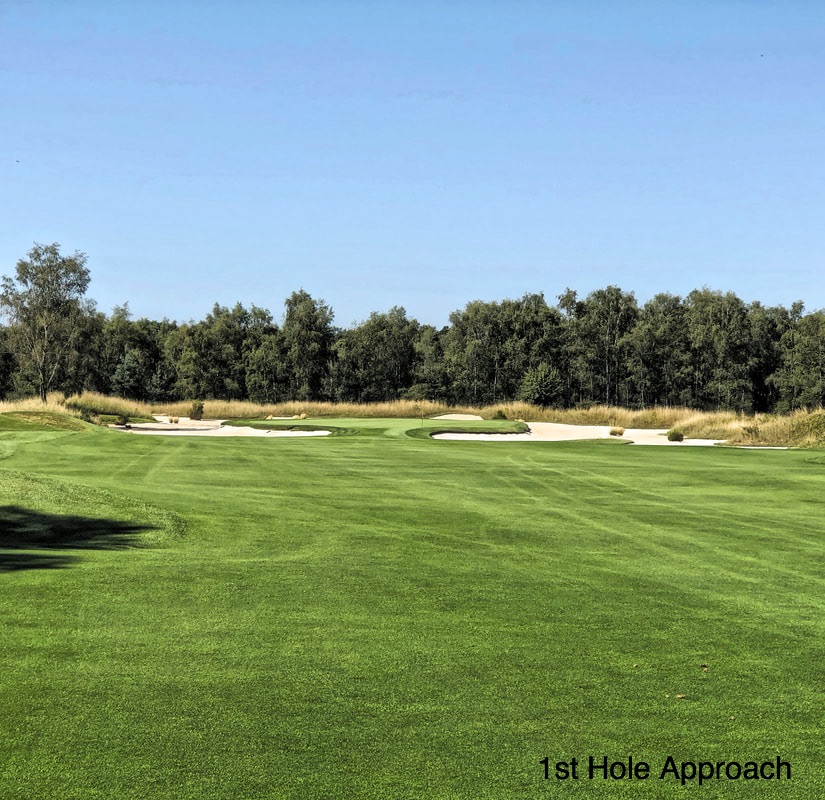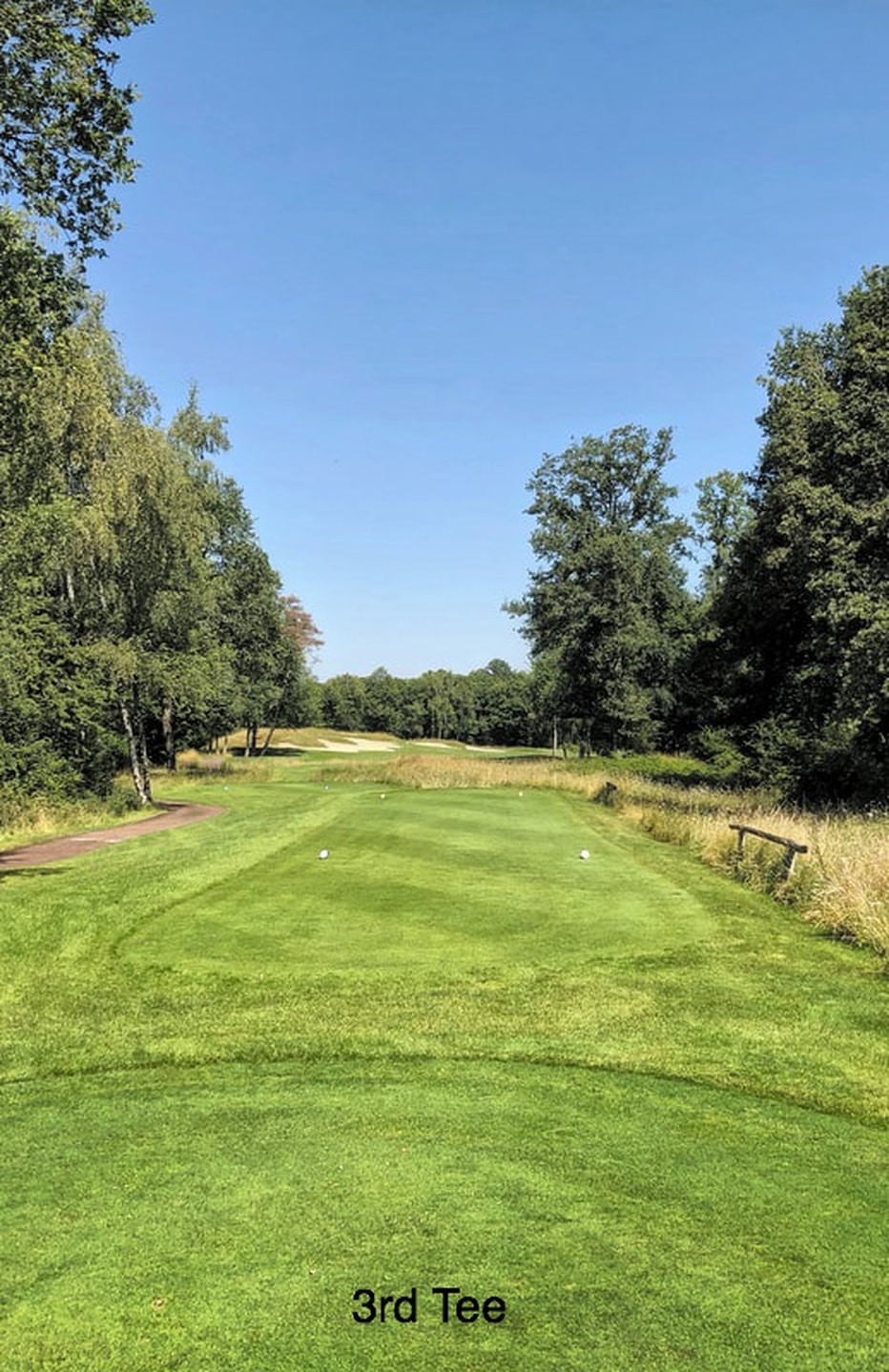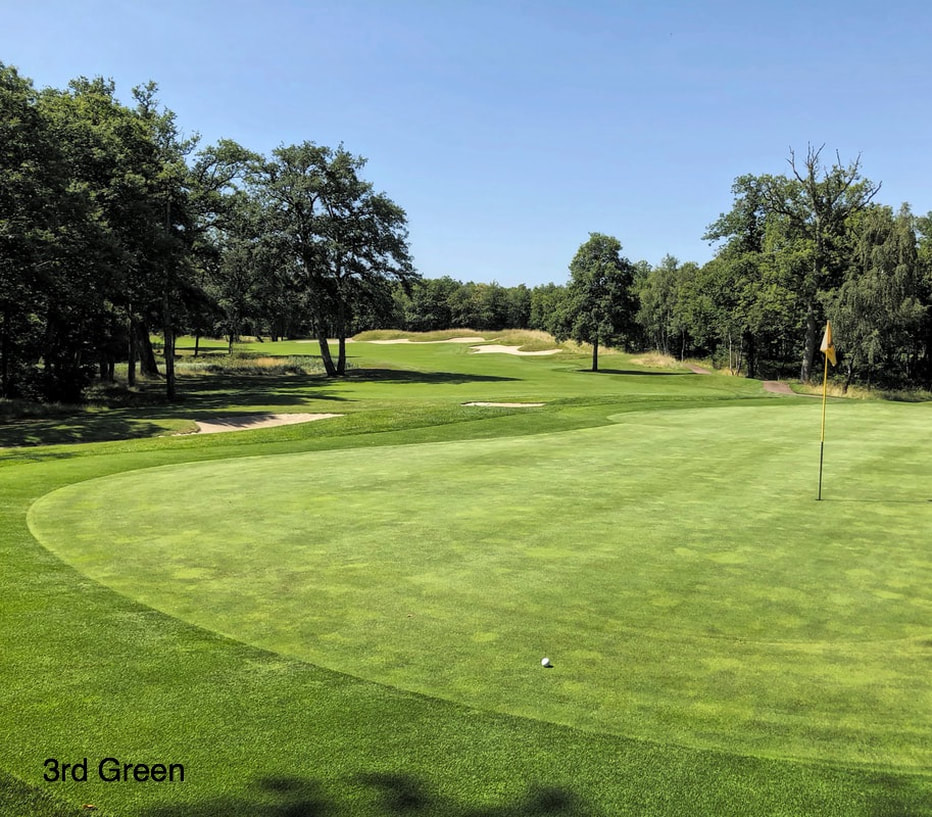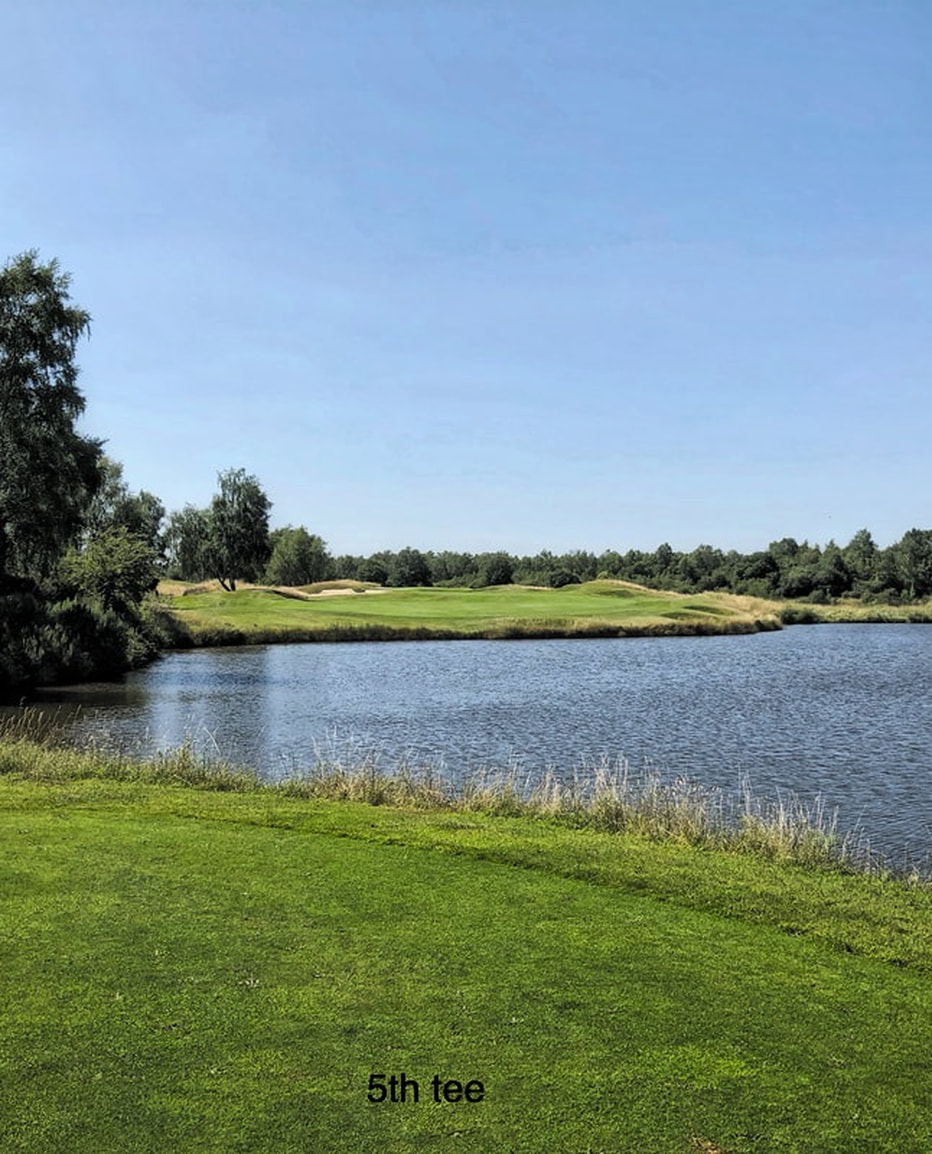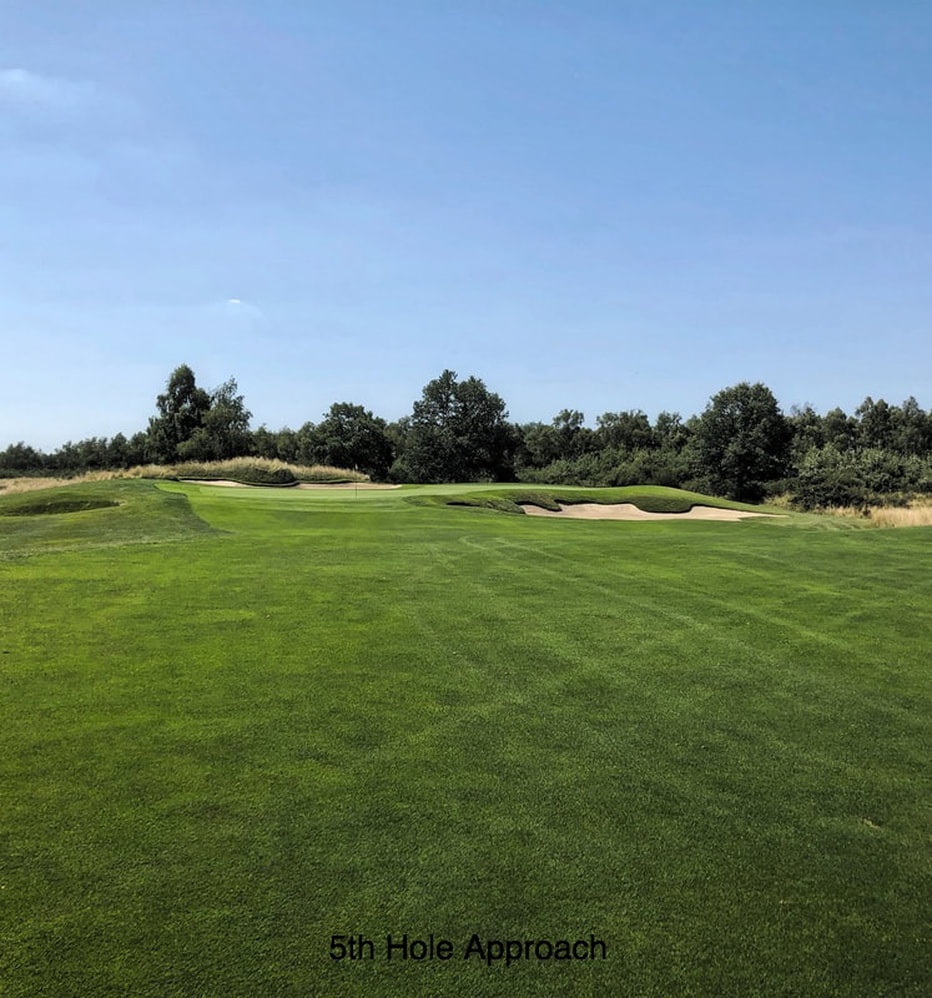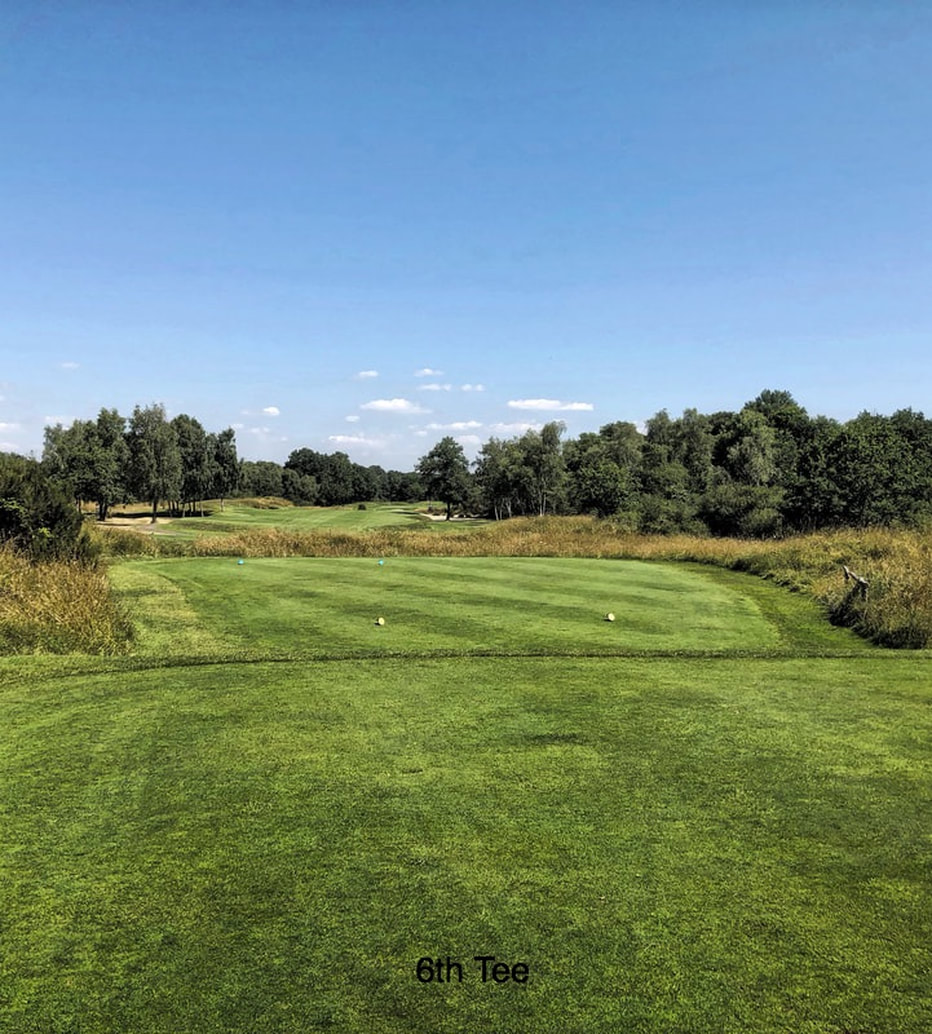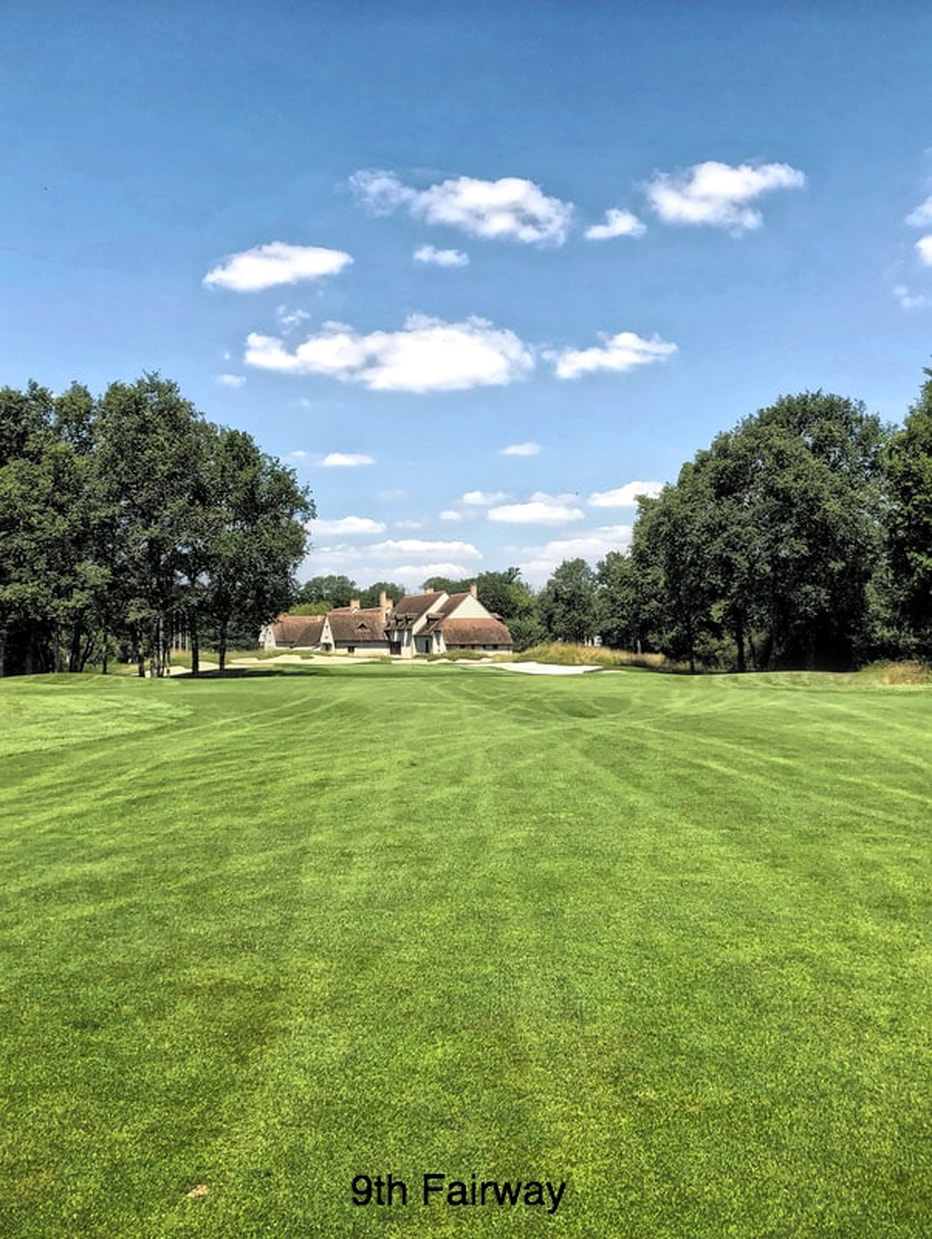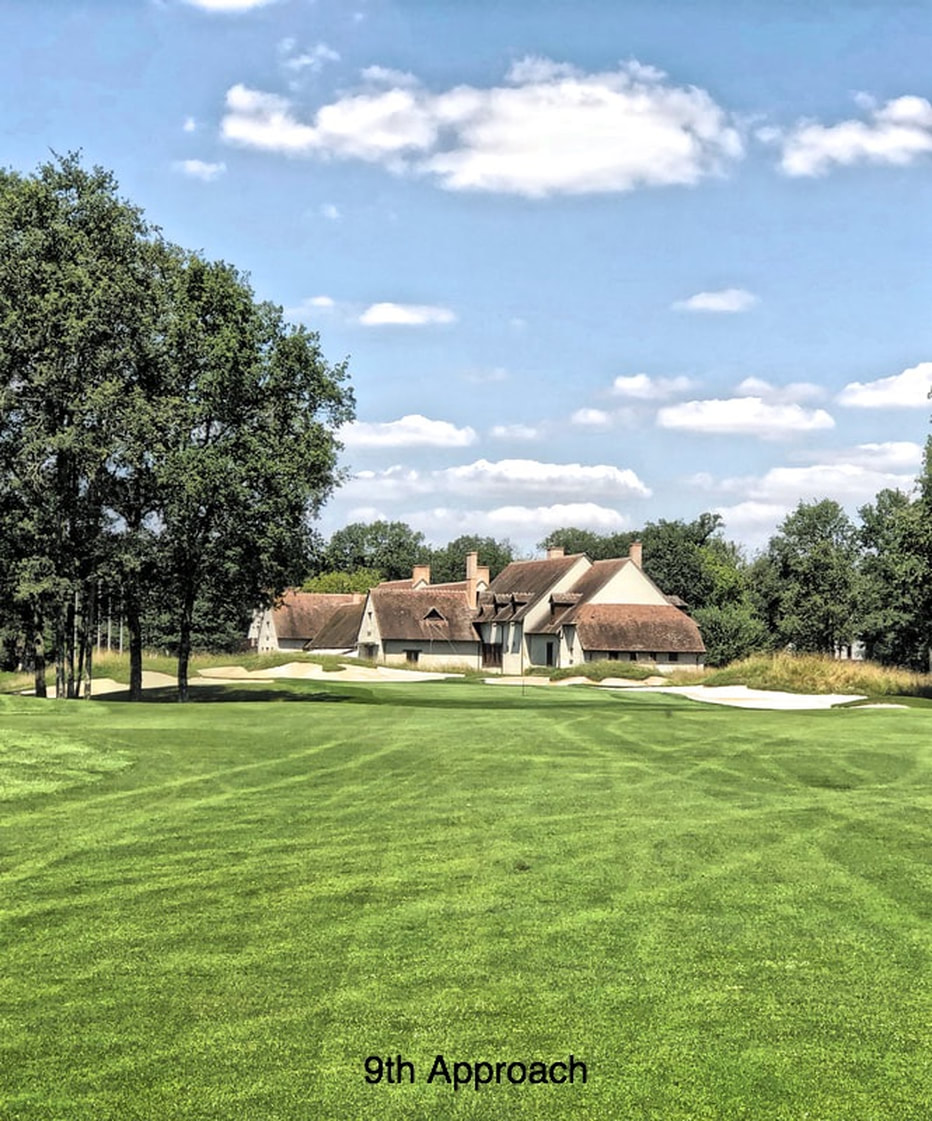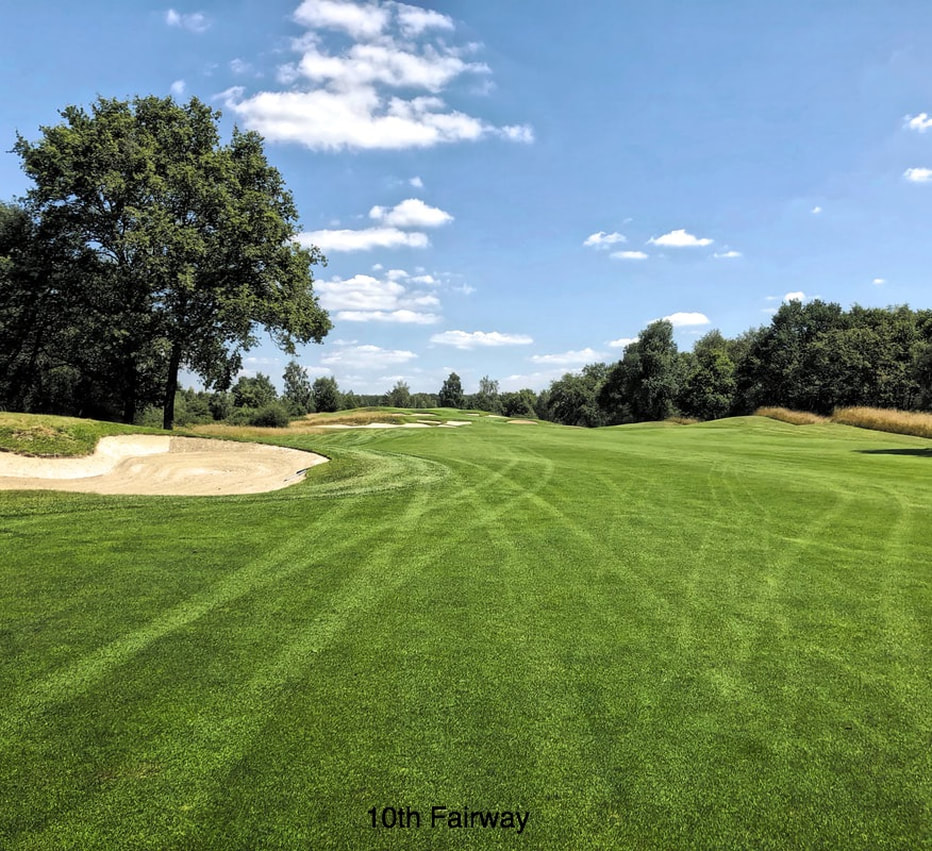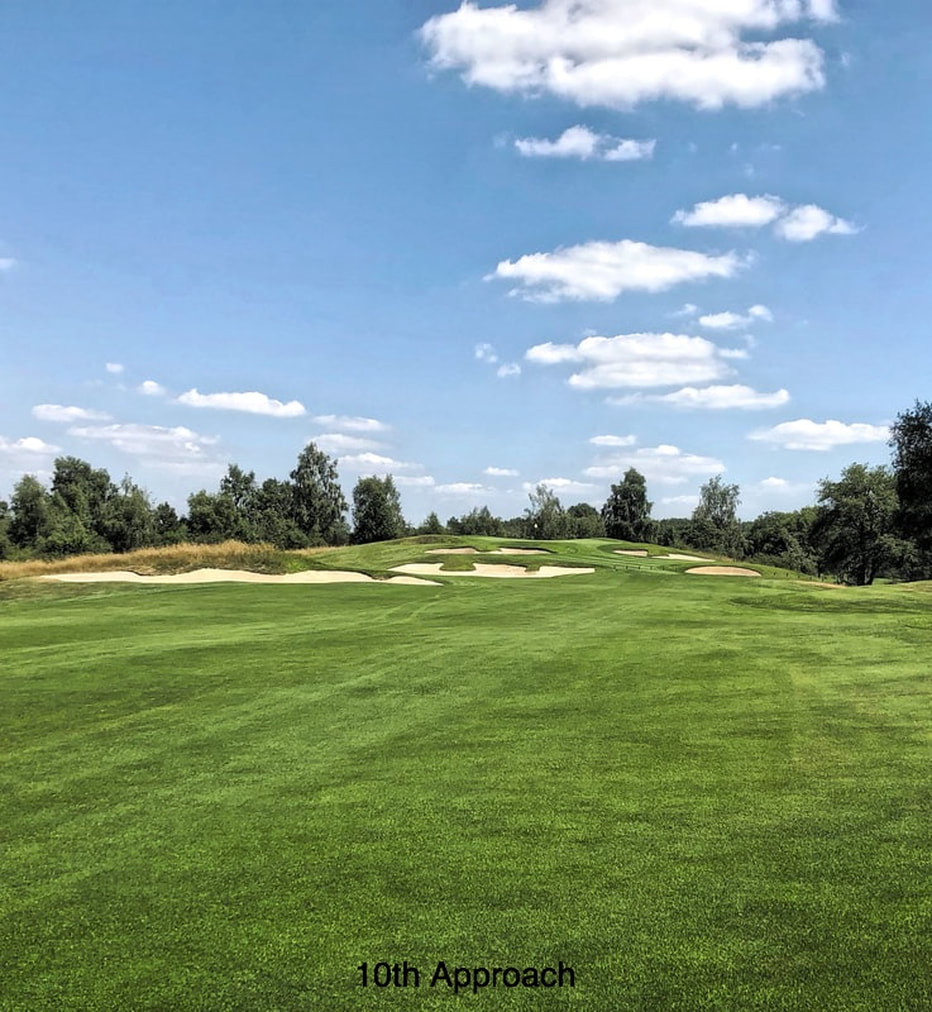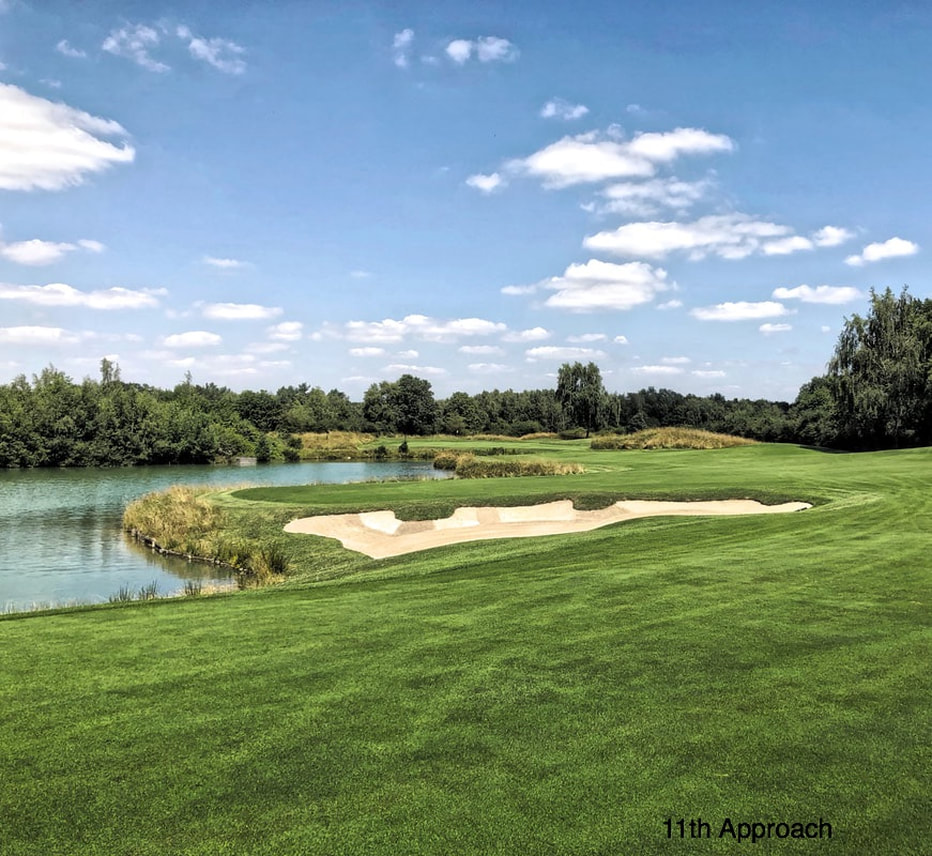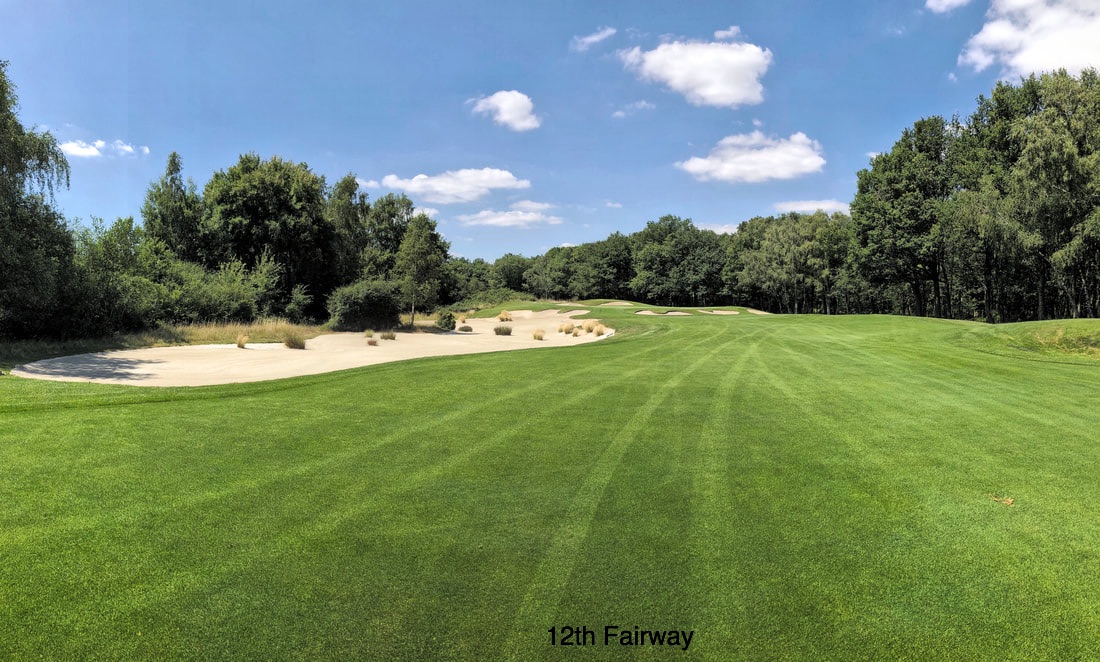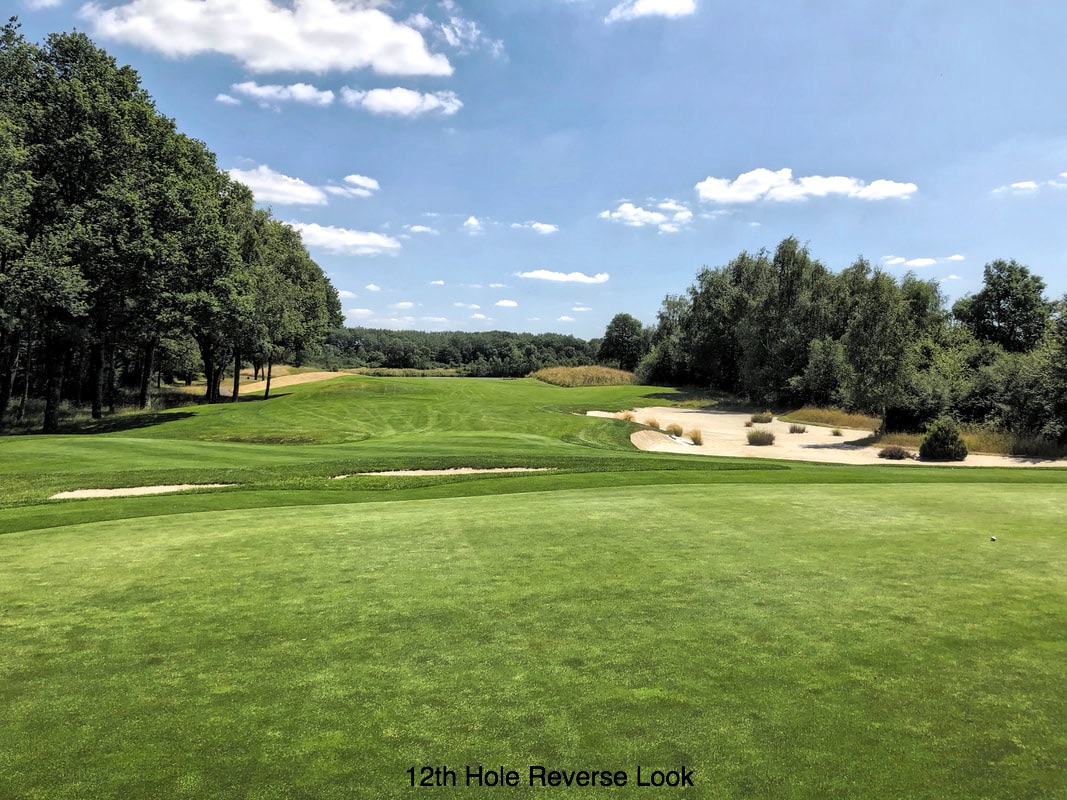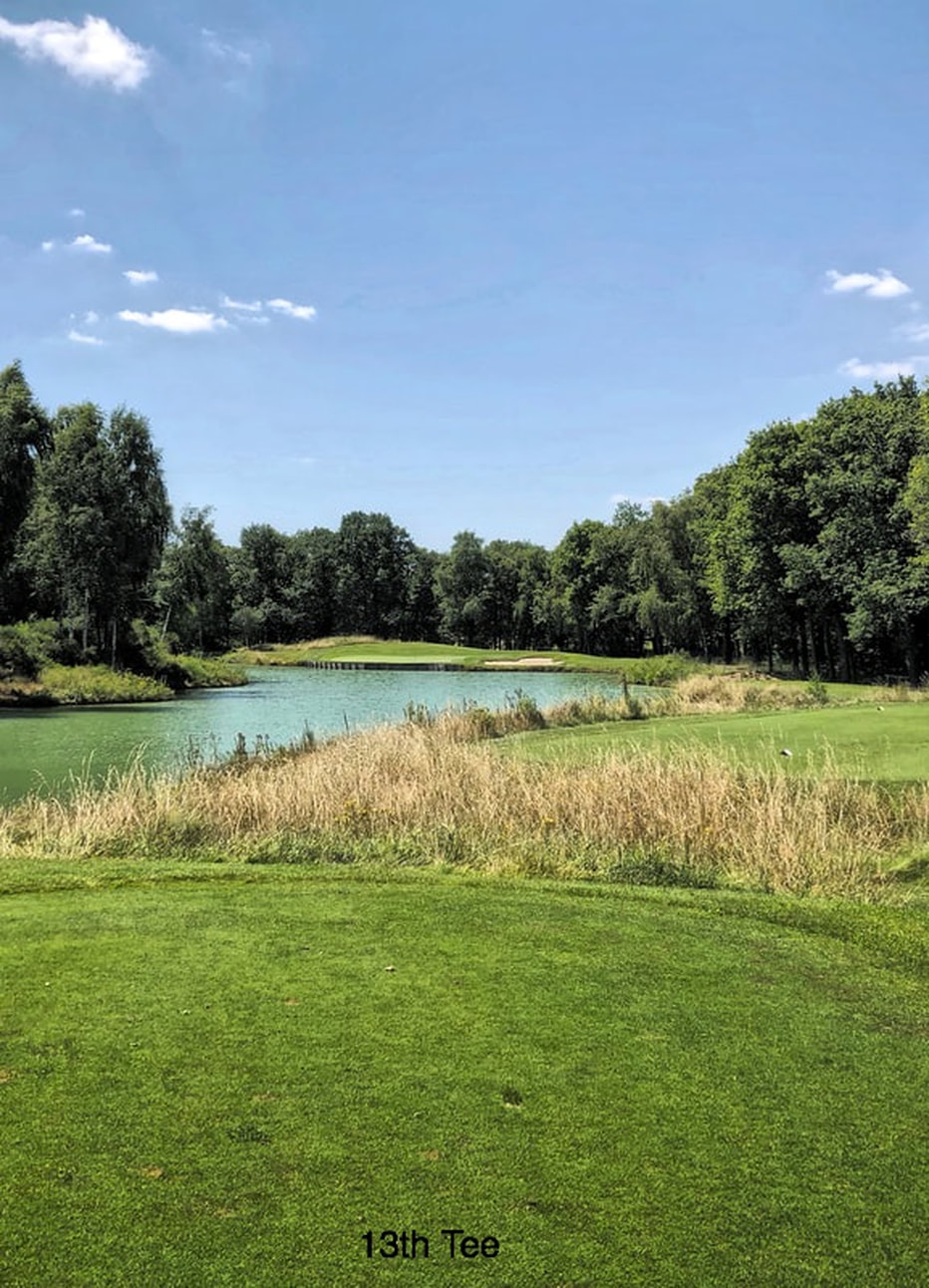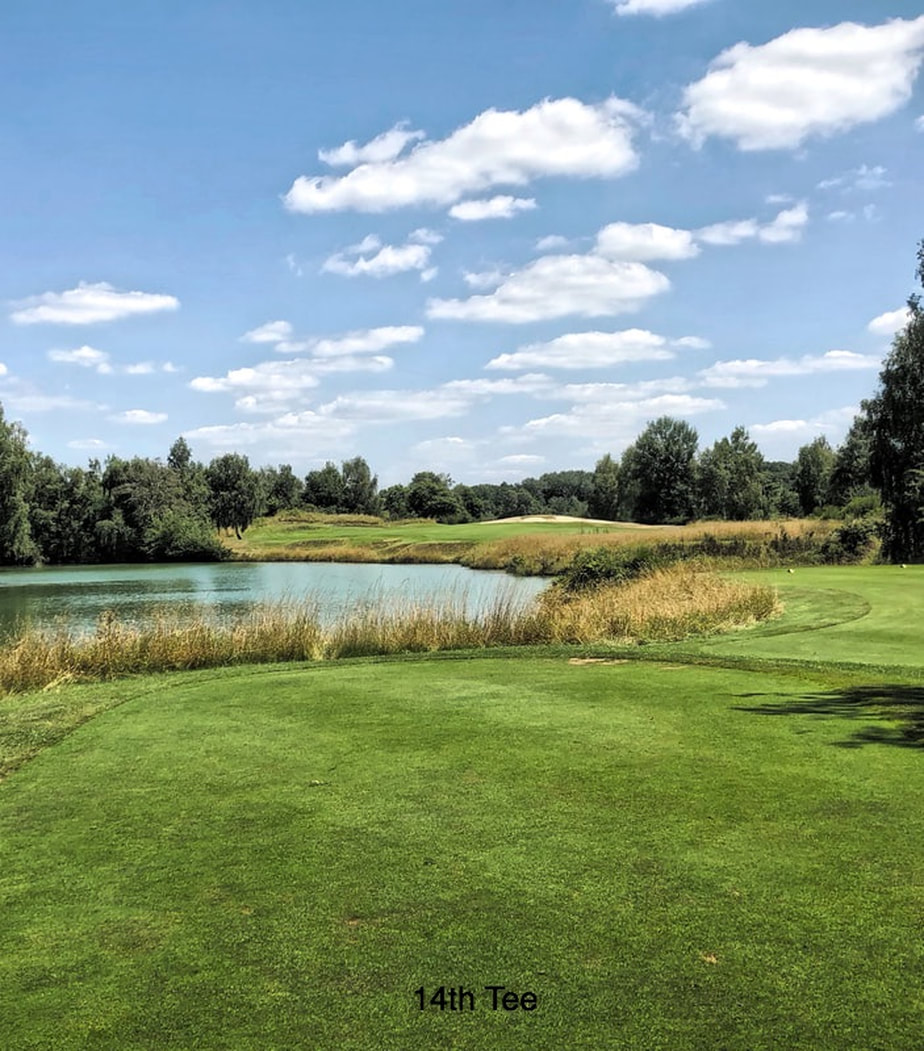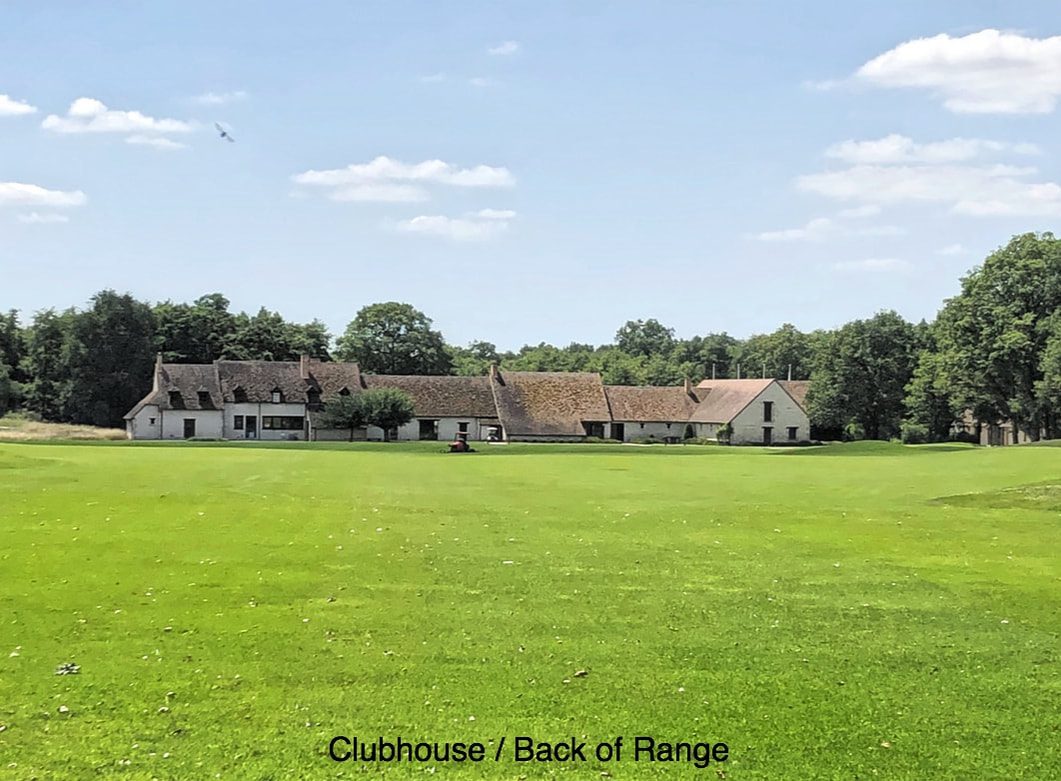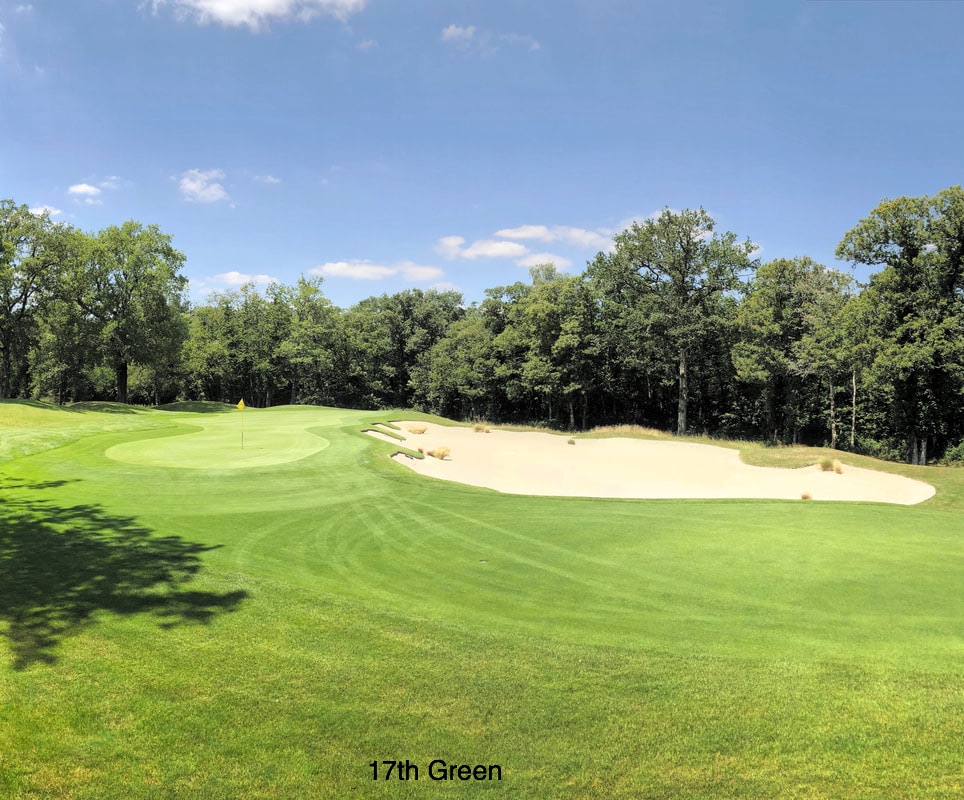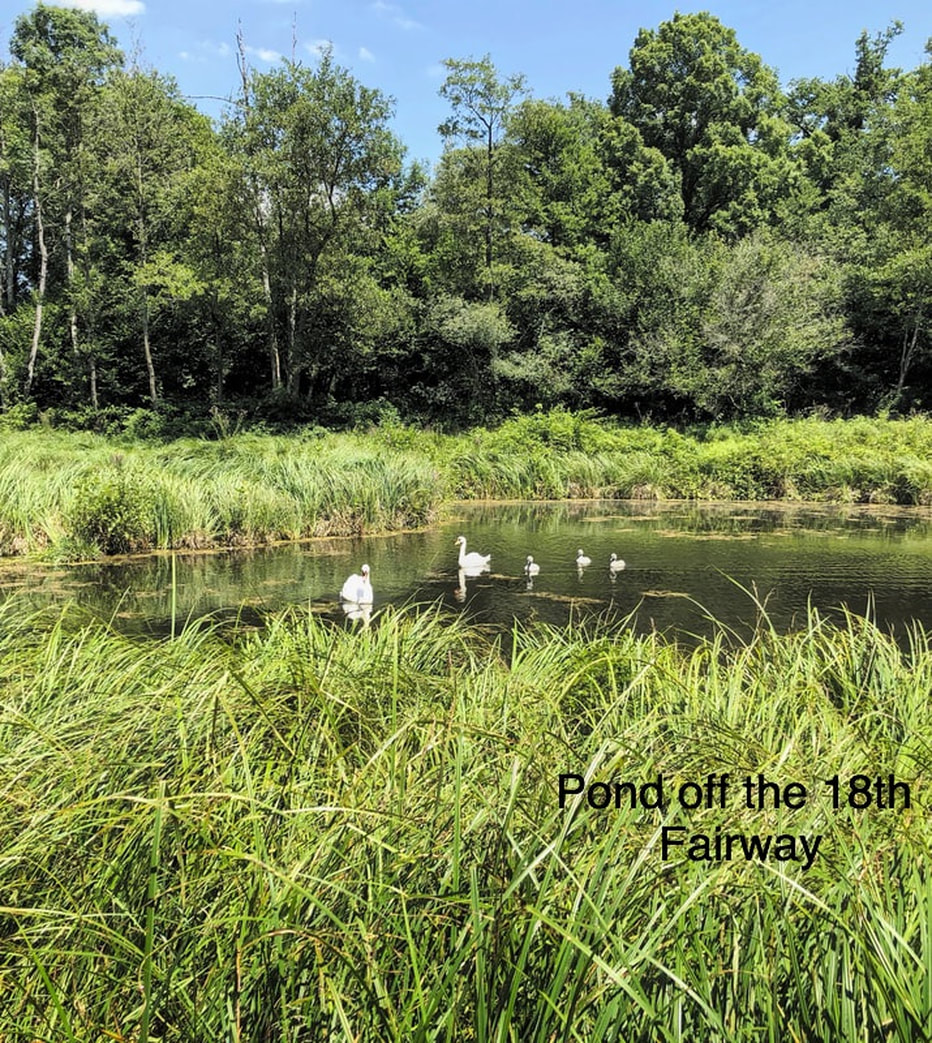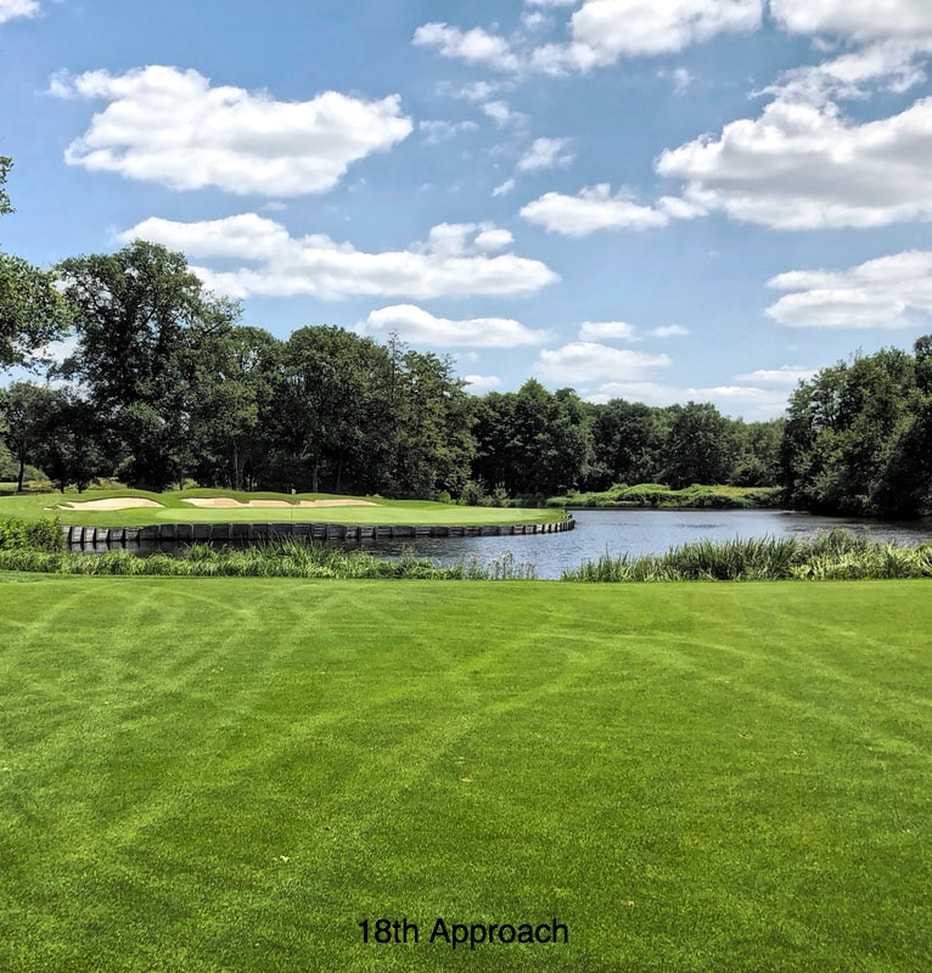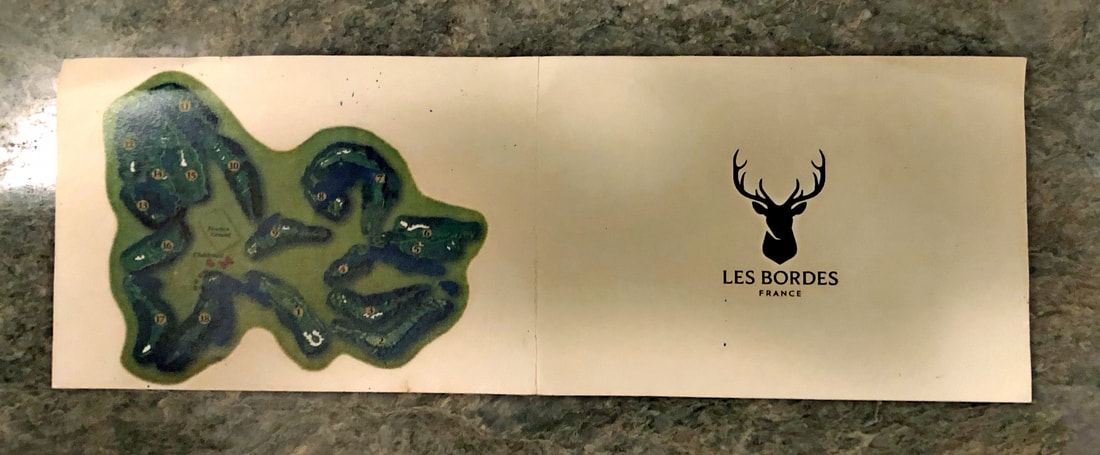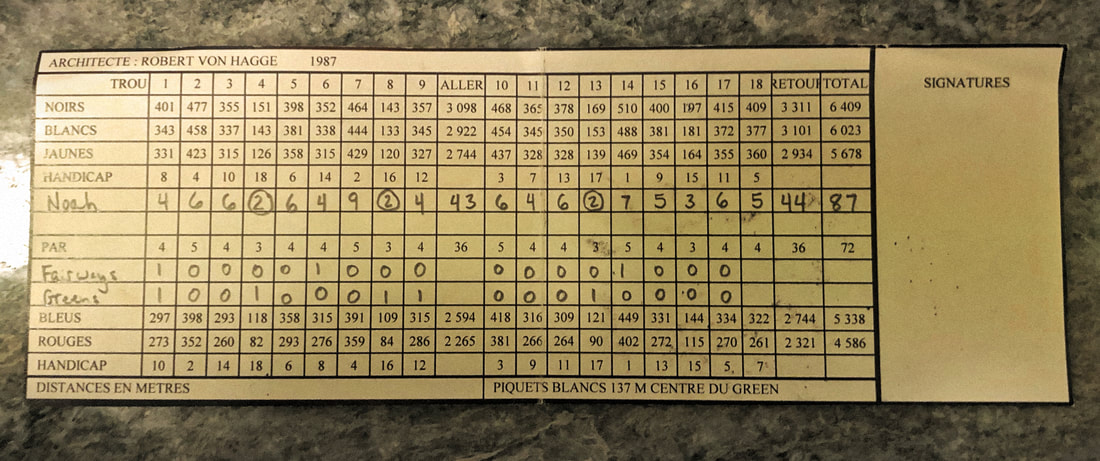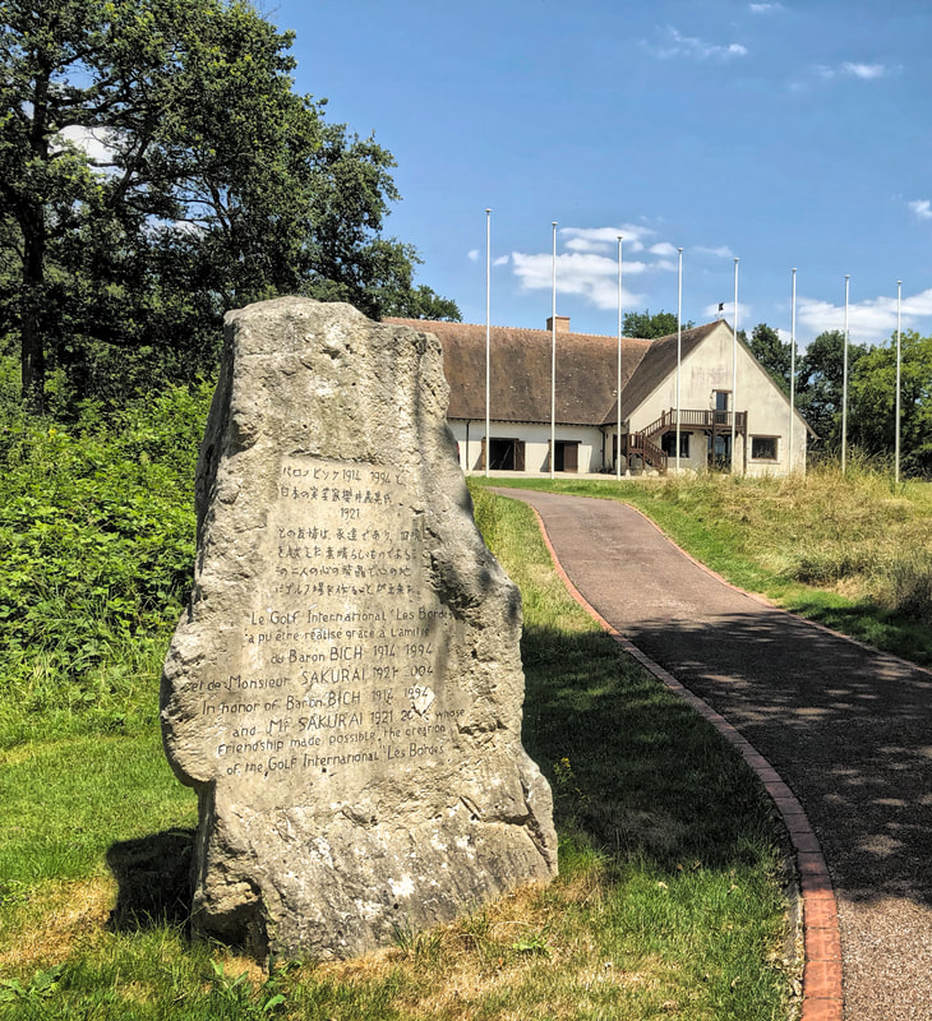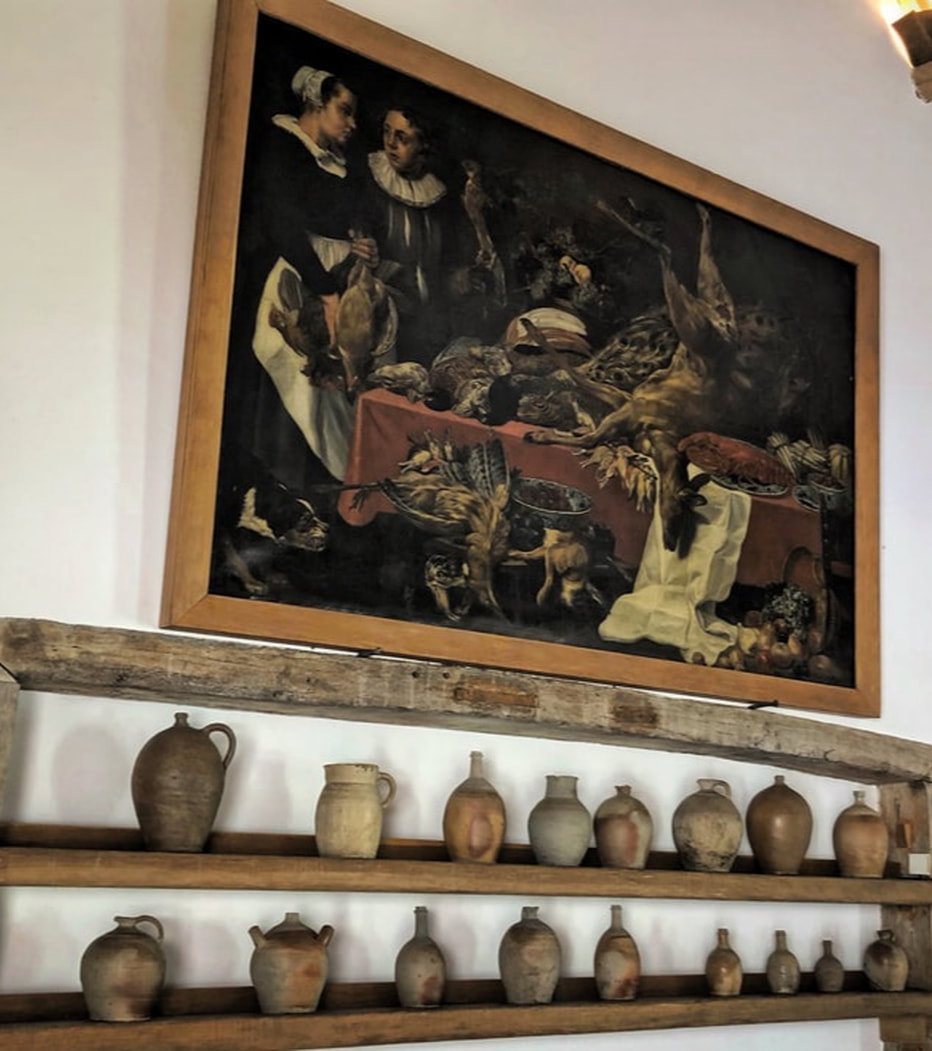|
The European jauntlet continues! Let's get right to it: Les Bordes. The name is known only to a few obsessed enthusiasts and its reputation precedes itself as of one of the most difficult courses in the world. I, for one, can attest to that. But we'll elaborate on that a bit later. Here is a little background to set the mood: Les Bordes is in the land of the chateaux - Loire Valley, France - about 1 1/2 hours south of Paris. There are 42 chateaux in this region so there are no shortage of sites to see. A couple notable day trips include visiting Chambord (the 16th century hunting lodge of King Francis 1st) and bike riding on one of the many scenic bike paths of the Loire. That is of course if you need something else to do besides play golf.  Les Bordes was designed and built in the late 1980s by Texas architect Robert Von Hagge for Baron Marcel Bich, on his hunting estate. Although he worked on more than 250 courses in 20 countries, Von Hagge is mostly known for his designs in Europe and Mexico. He interestingly enough did not start his career as a golfer but as a commercial artist and, get this, he also had a short stint as the Marlboro Man! Von Hagge started his golf career in 1955 as an assistant for the architect Dick Wilson and remained under his mentorship for seven years before breaking off and creating his own design team. Les Bordes is located just south of the Seine river near the beautiful hillside town of Blois. We visited an outdoor flea market in Blois where this 18th century hand ax caught my eye. I was reaching for some Euros to make this gem my own until my girlfriend reminded me that we lived in NYC and not in the European hills. My new fascination for the handcrafted arts of France would have to wait. One thing that couldn't wait was my appetite. Our host at the B&B Chateau la Touanne recommended a Michelin-starred restaurant that blew my mind: La Maison d'a Cote (about 30 minutes from Les Bordes). This 3 hour, 7 course meal was by far my favorite of the month-long European journey. Chef Christophe Hay was a true gentleman, giving us personal attention with each course. The whole experience was 5 star. The price for the entire meal, which included wine pairings, was $333 (converted from Euros) for the both of us. Guys - if you're looking to impress your lady - this is the place to go. A comparable Michelin-starred restaurant in NYC would cost upward of $700 for two - so take a trip to France and indulge in both the best food of your life and the best golf of your life. The car ride to Les Bordes takes you down a small dirt road for a few miles that ends at a gate with an intercom. I happily introduced myself (I cannot tell you how excited I was to play this famous course) and the voice over the speaker graciously welcomed me in and invited me to experience one of the most private and unique courses in the world. Les Bordes measures just over 7,000 yards from the tips. The club itself is very private with only 20 current members. I was fortunate enough to get a tee time on a Monday morning at 10:30am. Upon arriving I appeared to be the only player there - no other cars were in the parking lot. This could have been due to the fact that it was a stifling 90 degrees (not humid but blazing sun nonetheless). I was greeted by a wonderful staff member and manager (both female - which was refreshing) who were very welcoming and gave me some interesting tips on the course history and the grounds. The pro shop is separate from the clubhouse, with the main clubhouse being an impressive size with the interior reminiscent of a royal hunting lodge. Not quite as impressive at Chambord but then again, what is?! After a short warm up at the simple driving range it was off to the oversized putting green near the first tee. As I walked on the green I tossed a ball toward a hole, testing the speed of the greens. Much to my surprise, the ball rolled right into the cup! These greens were really fast - this could be fun! The range was just a wide open space and a few flags. This is in no way indicative of what you will encounter on the course. The course is tight, narrow and requires the utmost precision. After my round I came to wonder about this interesting dichotomy - was this one of Von Hagge's "creatively wicked" tricks? To lull you into a slumber on the uninspiring driving range only to hit you over the head with his daunting test of a golf course? Hmmm... Once on the course there was unfortunately little fun to be had - just survival. I have played many difficult courses around the world. Some are just tricked up; some are truly difficult designs. Les Bordes falls into the second category. The course record is held by Jean van de Velde with a score of 71, which one under par. This give you a good idea as to the demanding nature of Les Bordes. This course is difficult for the sole purpose of testing your complete game. Unfortunately, Les Bordes isn’t set up for caddies so most members take carts, as did I. In my cart was a small pail for sand. At first I thought it was a joke from its diminutive size but then as the round progressed I realized it was all the sand I would need. The fairways are so tight that I only hit three of them in the entire round! The fairways also tend to be crowned, which makes it all too easy for any errant shot to find its way into the tall grass, never to be seen again. The first hole, a long par 4, had a forced carry across a lake to a fairway that I was blind to. I hit my tee shot perfectly and went to see where it landed. It was dead center of the fairway. The only problem was the fairway looked to be about 20 yards wide! I honestly had never seen a fairway this tight before and I’ve played in U.S. Open qualifiers where the object is to punish bad shots. My second shot was to the middle of the island green surrounded by sand. I cautiously 2 putted and thought this course might not be as hard as the slope and rating indicated. The thing to realize about Les Bordes is that only shots with exactly the right shape and distance will prevail. On the second hole, a long par 5, I hit a nice draw around the corner only to realize I hit it a bit too far and it ran through the fairway. Once off the fairway, the forrest is ready to gobble up errant shots so back to the tee it was. After finishing the hole with a double bogey I still had hope of salvaging the round but the course was already showing its teeth. By the time I reached the par 5 7th I was 4 over but playing quite well. The drive on the 7th is beyond difficult. Some designers like to make a tee shot look more demanding than it is by hiding the landing areas from view. Not here though. What you see is what you get. What looked like a small landing patch was even smaller than it first appeared. My tee shot seemed like it hit the center of the fairway but when I arrived in the fairway it was nowhere to be found. What I did find was a fairway shaped like an upside down canoe and any shot that had any curve, whether slice or draw, was bound for disaster. On the left a huge lake protected the rest of the hole. To the right were tall reeds and swamp just two feet from the edge of the fairway. I proceeded to retee after a long search for my first ball. Two tee shots later and I was finally in the fairway. After a terrible 3 putt and a total of 9 on the card, I decided that keeping score at this point didn't much matter and shouldn't be my focus. If I was going to enjoy this brilliant course it wasn’t going to be by shooting a number. This turned my whole experience around. On the par 3 8th I made a sweet birdie! Making two birdies on both par 3s gave me hope that maybe I could pick up some momentum on the back nine. The problem was I still had the par 4 9th to finish. Luckily I hit a perfect drive, hugging the left side, which left me a short approach and a tap in par. To better understand the reasoning behind such a challenging course design we need to go back a few years to 1966 when Golf Digest released its first annual 'America's 200 Toughest Courses' list. Before this there were no ranking lists for golf courses. Now there was a list ranking courses based not on aesthetics, architecture, or over-all experience (as we do in modern day), but simply on difficulty. And because of this, golf architects were anxious to build such courses and see their own name and design listed among the noteworthy rankings. The architectural period between 1966-1999 was a lesson in extreme golf design, with some of the hardest, most extreme courses in history made during this era. Robert Von Hagge called his time designing Les Bordes his most "creatively wicked period of his life". Since it first opened its doors in 1987, Les Bordes has secured a #1 ranking many times over, in various publications, as the best course in Europe. A new course adjacent to Les Bordes will be designed by Gil Hanse and is slated to open in 2020. The back nine starts with a very tough drive. And an even tougher approach to a volcano shaped green and surround. The back is filled with just as much danger as the front with water and tall grass everywhere - the great example of this is seen on the 11th and 12th hole. I made another birdie on the par 3 13th which was a relief considering how poorly the rest of the round was going. The penalties are everywhere including a penalty on to of a penalty (double punishment!) like the tall grass in the sand trap. And before you ask...of course I landed right in it with my drive! The greens have a similar shape throughout the course, which is that of a serpentine nature. One caveat is the size these greens. You'll notice they tend to be both narrow and small in size. And certain greens went beyond small to tiny! Take a look at the par 4 17th green. Now keep in mind the hole is 450 yards from the tips so a huge accurate drive is required just to start. The approach shot probably won’t terrify you until you get closer to the green and realize just how small the putting surface is. This was a great example of master level camouflage technique. Notice how wide the green is from the approach view - this leads you to believe that it's also deep. Nope, I could literally lay the flag across the narrowest part and almost touch each side. It’s uncommon that a designer will show this kind of difficulty so frequently on a course. These kind of extreme features are generally left for the hardest handicap holes but not here at Les Bordes. Every hole is a study in the extreme but that doesn't take away from the enjoyment of playing here. In fact it enhances the appeal of the course and challenges the game in many different ways. I think it would be fair to say that if you can play well at Les Bordes your game is at an elite level. The course boasts a rating and slope of 78.8/166. That’s right: 166. The closest I could find to this in America was the Ocean Course at Kiawah Island with a 79.6/155 (designed by Pete Dye - another 'extreme course designer' from Von Hagge's era), and we all know how hard it was during the 1991 Ryder Cup. In fact, if you want to know just how punishing Von Hagge made his courses, look no further than the 2018 Ryder Cup at Golf Le National (another Von Hagge design) where the U.S. got obliterated. After this exhausting but exhilarating round was over, I explored the truly unique clubhouse and the locker rooms (with their wooden rustic lockers). Inside the clubhouse you'll notice various large hunting paintings surrounding you on the walls. Mounted deer and wild boar fill in the bare spots. I sat outside enjoying the view eating my lunch and licking my wounds - what a course! This was definitely one of most difficult course I've ever played. A glass (or two) of wine from the Loire Valley helped sooth my soul. After one hell of a club sandwich and a little reflection, it became clear why Les Bordes deserves its place in my Top 100 Courses I’ve ever played. Extreme in nature along with its visual beauty - Les Bordes is one course I hope to return to very soon.
0 Comments
Your comment will be posted after it is approved.
Leave a Reply. |
I started this blog after years of traveling and growing frustrated with the limited amount of information about the courses I wanted to play. I wanted to see all 18 holes in pictures before I played the course and to learn a little about the area surrounding the course. I wanted a complete immersive look into where I was going to play. Since no one else was doing this I decided to do it myself. The courses I choose for this blog are the ones that stood out among all the thousands of courses I have played. Not all will be considered architectural masterpieces but they all offer something unique to the golfing world. I hope this blog inspires you to get out and see the world and maybe sneak in a round or two along the way! 
Categories
All
|
Proudly powered by Weebly

